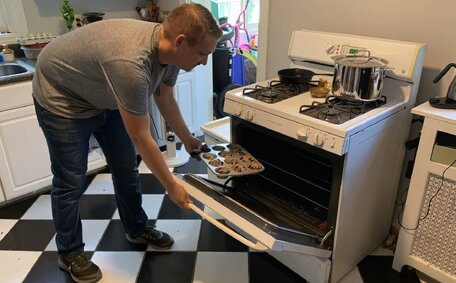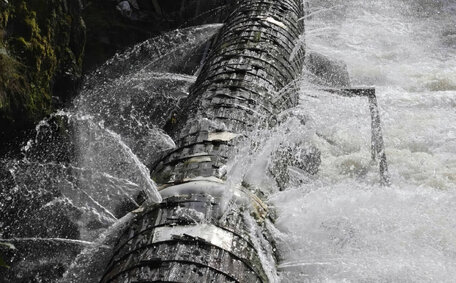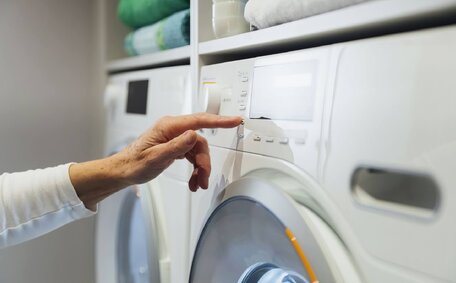What is Pipe Relining and How Does it Work?
Pipe relining in Sydney is a trenchless technique perfect for repairing damaged pipes without excavation. It involves inserting a flexible epoxy resin lining into the pipes, effectively restoring them.
Here are the key steps involved in the pipe relining process:
- Using CCTV cameras, a plumbing specialist will initially scrutinise the pipe to ascertain the extent of damage and identify any defects.
- The pipe is then thoroughly given a drain cleaning to remove any built-up debris or root intrusion.
- A specific type of material, epoxy resin, is mixed and can be used to repair the pipe via access points like manholes.
- The resin coating then hardens, creating a smooth, jointless, and corrosion-resistant new lining on the inner surface of the old pipe.
- Once cured, the relined pipe is even stronger than the original, with the process restoring flow capacity and stopping leaks.
Pipe relining in Sydney is renowned for its effective results and minimal disruption, consistent with its worldwide success starting in the 1980s. Capable of mending pipes compromised by tree root incursions, fractures, and corrosion, relined pipes, with an estimated lifespan of over 50 years, offer an excellent repair alternative to traditional pipe replacement. Proximity Plumbing uses relining techniques that significantly reduce the costs associated with complete pipe renewal.
Advantages of Pipe Relining for Commercial Buildings
For establishments grappling with blocked drains, pipe relining provides numerous advantages over traditional pipe replacement:
- Minimal disruption - Pipe relining is completed with little disturbance to regular operations. Access is only needed at entry and exit points, avoiding large-scale excavation or walls being knocked down.
- Speed - Leveraging With our pipe relining solution, the installation can be completed in just one day in the majority of cases, thanks to our same day service. This minimises downtime and loss of revenue.
- Cost-effective - Pipe relining is more cost effective than traditional full replacement methods, typically costing 50-60% less. There is no necessity to replace associated fittings and fixtures either, making it a convenient option for businesses.
- versatile - We use techniques that work for sewer pipes as well as a wide range of other pipe materials and sizes, including cast iron, PVC, concrete, and copper pipes from 20mm to 300mm in diameter.
- Long lifespan - Relined pipes have an expected lifespan of 50+ years. This method, known as pipe patching, relining, how does it work? It provides a long-term pipe repair solution.
- Minimal waste - Relining your plumbing system’s pipes is an environmentally friendly option resulting in very little material waste when compared to the traditional methods that dig up and replace old pipes.
- Improved flow - Relining eliminates obstructions, such as hot water system corrosion and cracks, to restore full pipe capacity.
Drain pipe relining emerges as the best choice among plumbing services for commercial establishments needing repairs or upkeep, delivered with minimal disruption, time efficiencies, fiscal advantages, and lasting outcomes.
Minimal Disruption to Business Operations
When considering relining vs pipe replacement for commercial buildings, one of the biggest benefits of relining is allowing normal business operations to continue with minimal disruption. This is in stark contrast to full pipe replacement, which often requires the need extensive downtime.
Replacing old pipes often obligates construction crews to need dig up excavations, dismantle walls and ceilings, and cordon off major sections of a building. This leads to major disturbances like:
- Loss of access to facilities like bathrooms and kitchens
- Noise, dust and debris disrupting work
- Customers being unable to access the business premises
- Revenue losses from closures or limited operations
Pipe relining sidesteps these complications by proceeding from modest access points such as manholes or your drain entries. From here, crews can thread the lining material through the entire pipe length, after which you can use them again without issues. Aside from short sections being unavailable, the rest of the building remains open and functional.
After lining installation, which usually takes just 1 day, the pipes are restored with minimal fuss. It’s a fast and efficient repair method that maintains business continuity and productivity.
If your commercial plumbing requires an upgrade, consider our pipe relining solutions that enhance pipes without significant disruption.
Cost and Time Savings Compared to Pipe Replacement
One of the biggest advantages of pipe relining over traditional replacement is the significant cost and time savings for commercial buildings.
For detailed cost evaluations, our relining services typically cost between $150 and $250 per metre, significantly less than full pipe replacements. Choosing relining for large commercial buildings could reduce plumbing expenses by a substantial amount.
Considerable time is saved as well; traditional pipe replacement involves weeks of work, including demolition and reconstruction, while sewer relining is rapidly performed with little interruption to business activities.
The illustration below contrasts typical expenses and timeframes, pieces of information our clients value when deciding on pipe rehabilitation methods:
With pipe relining offering such considerable cost and time savings, it makes financial sense for most commercial premises needing plumbing repairs. The minimal invasiveness also signifies that your business activities are conducted in any way we can ensure the least disruption.
Long-Lasting and Durable Pipe Repair
Regardless of the approach we take to commercial pipe problems, the extraordinary sturdiness and lifespan of pipe relining propose repair solutions formidable to prior methods, with the added benefit of creating a robust new pipe within old. Once cured, the epoxy resin lining creates a seamless 'new pipe within a pipe’ that is even stronger than the original.
Pipe relining, and how it enhances durability, ensures that relined pipes, repairs of which can carried out efficiently, come with a year guarantee for extensive testing and sustainability over 50 years. This is around triple the lifespan of traditional pipe replacement methods. The solution to your pipe issues is crafting a resilient barrier against corrosion, abrasion, chemicals, and tree root invasions through the robust, tough resin material used in the pipe relining process.
To ease concerns, opt for pipe relining, which maintains the integrity of plumbing systems by fixing existing pipes in various settings. This approach, non-destructive to building stability, avoids disruptions like excavating floors and walls.
So, between pipe relining jobs, when your commercial premises require a long-term, heavy-duty pipe repair that will keep working for decades, consider it as your unrivalled solution. The technology produces robust, durable pipes that will exceed your expectations for longevity.
Limitations and Considerations for Non-Residential Pipe Relining
While relining Sydney pipes is highly suitable for many commercial buildings, there are some limitations and considerations to keep in mind:
- Size restrictions - Most systems are limited to pipe diameters between 20mm and 300mm. Larger pipes may need full replacement.
- Highly degraded pipes - If the original host pipe is too badly corroded or damaged, it may not provide a stable base for the liner.
- Complex pipe layouts - Severely intersecting or branching pipes can complicate the relining process and materials.
- Emergency repairs - For cases such as burst pipes which require instant attention, emergency plumbing services might be a more suitable option.
- Coating failures - In uncommon cases, the epoxy may not adhere, leading to detachment from the old pipe’s interior.
While these considerations don’t preclude the use of pipe relining for drain repair in many cases, a professional plumbing inspection is recommended to assess the suitability for your specific building. Areas with very complex pipeworks or large diameter pipes may be better suited to traditional replacement methods.
Nonetheless, as the experts came out to assess, they comprehended how trenchless pipe relining continues to be an exceptional repair choice for myriad plumbing challenges in commercial edifices. To pipeslearn more about pipe relining, seasoned plumbers can provide advice on the optimal solution after a detailed inspection of your pipes.
Pipe Materials and Sizes Suitable for Commercial Relining
Pipe relining can be used to repair a wide range of pipe materials found in commercial buildings, including:
- PVC (polyvinyl chloride)
- Concrete
- Cast iron
- Galvanised steel
- Copper
- Clay
It is suitable for pipes ranging in diameter from 20mm up to 300mm. The most commonly relined sizes are:
While smaller diameter pipes around 20mm, including sewer lines, and larger ones exceeding 300mm may present accessibility or cleaning challenges, these instances where traditional replacement is needed are rare.
Almost any pipe configuration can be relined, including:
- Straight pipe sections
- Bends and elbows
- Tees and junctions
- Reducers
The flexible epoxy resin coating used in plumbing pipe relining can also navigate tight bends and complex layouts. Limitations are very rare.
So whether it’s rusting galvanised steel, cracked clay or leaking concrete pipes, commercial pipe rehabilitation through relining is detailed on our website, offering a durable repair without causing significant disruption to your business.
To carry out pipe relining, technicians need suitable access to insert the lining material and equipment into the pipes. This is an important logistical factor for non-residential relining projects.
Typically, access is gained via existing entry points like:
- Manholes
- Drainage pits
- Sewer vents
- Downpipes or taps
Access through manholes offers the most straightforward way to reach extensive pipe sections, though other entry points can be used for smaller-scale operations.
A clear pathway at least 0.6 m wide and 2.2 m high is required so technicians can visit and manoeuvre relining equipment like CCTV cameras, pressure hoses and resin liners to access points. Equipment can be quite large - pipeline inspection cameras may be mounted on a trolley, while cylindrically shaped liners are up to 300mm in diameter.
Where direct indoor access is unavailable, externals entries to underground drainage pipes may be utilised. This avoids disruptive breaking into walls, floors or ceilings.
Through scrupulous strategising, one discovers that certified plumbers wielding pipe relining technology accomplish commercial pipe relining with scant disruption to the daily bustle of your premises. You can find out more about how this approach maximises the benefit of avoided disruptions through our detailed information sources.
This is an important or taps
When considering pipe relining for a commercial building, a detailed evaluation should be conducted to determine if it is the optimal solution. The key factors to assess include:
- Pipe size and configuration - Relining has limitations on maximum pipe diameters and ability to navigate complex layouts.
- Building type and requirements - Consider the drainage needs and any restrictions, like heritage status, that may preclude digging trenches.
- Accessibility - Assess if entry points for relining equipment are available without needing significant demolition.
- Cost-benefit analysis - Compare project timeframes, costs and disruptions against pipe replacement.
Upon considering these critical factors, our head office can determine whether pipe relining is the optimal trenchless repair method suitable for your needs. An experienced plumber can help determine the best course of action based on a detailed site inspection and assessment.
When considering pipe relining for a commercial building, a detailed evaluation should be conducted to determine if it is the optimal solution.
Pipe condition - Examine the current state of the pipes via CCTV drain inspection. Severely deteriorated or collapsed pipes may not be suitable for relining.Pipe size and configuration - Relining has limie status, that may preclude digging trenches.Accessibility - Assess if entry points for relining equipment are available without needing significant demolition.Real-World Examples of Commercial Pipe Relining Projects
Pipe relining has been utilised for numerous commercial projects across Sydney and wider NSW. One prominent example is the recent relining of stormwater drainage pipes under the Sydney Harbour Bridge approaches. The 875m of heritage-listed pipes had suffered corrosion damage over 80+ years but were restored to full functionality while avoiding disruptive excavations.
Aged buildings, like a three-storey office tower in Sydney’s CBD, have had their 150mm sewer pipes successfully relined, with disruptions confined to a single weekend and lasting repair benefits expected to endure over 50 years.
Numerous Sydney healthcare centres have opted for pipe relining, with our very professional team doing a great job in enhancing critical plumbing infrastructure without affecting hospital functions. Large shopping centres like Westfield also regularly rely on pipe relining to revitalise their drainage system infrastructure behind the scenes without affecting trading hours or customer access.
Having established a robust reputation in the eastern suburbs and beyond, pipe relining has become the preferred trenchless plumbing solution for Sydney businesses requiring non-disruptive and cost-effective pipe restoration.
Pipe relining has been utilised for numerous commercial projects across Sydney and wider NSW.
Aged buildings, like a three-storey office tower in Sydney’s CBD, have had their 150mm sewer pipes successfully relined, with disruptions confined to a single weekend and lasting repair benefits expei>Proper credentials - They should have all necessary licences and be accredited by industry bodies like the Australian Institute of Plumbers.
Quality materials - Confirm the use of premium epoxy resins and linings from well-regarded brands that conform to industry standards.Advanced equipment - The latest cameras, controls and curing equipment should be usny companies offer long-term guarantees on workmanship and materials.At Erskine Park Plumbing Company, which specialises in pipe relining, call us on 1300 349 338 for a free quote from our highly experienced team delivering trusted solutions across Sydney for over 10 years. Contact us on 1300 349 338 to understand how our relining services can rejuvenate your commercial pipes with minimal fuss.
When selecting a professional contractor for pipe relining in a commercial building, there are several key factors to consider:
Industry experience - Look for an established company with many years of specialisation in commercial pipe relining projects.Proper credentials - They should have all necessary licences and be accredited by industry bodies like the Australian Institute of Plumbers.Quality materials - Confirm the use of premium epoxy resins and linings from well-regarded brands that conform to industry standards.





